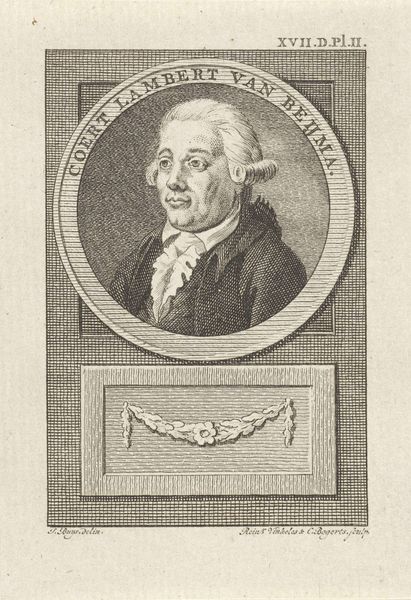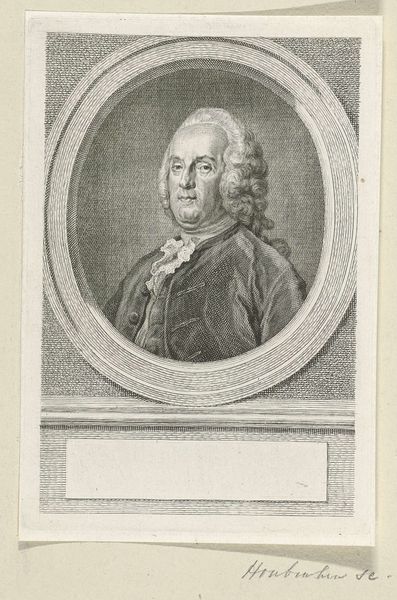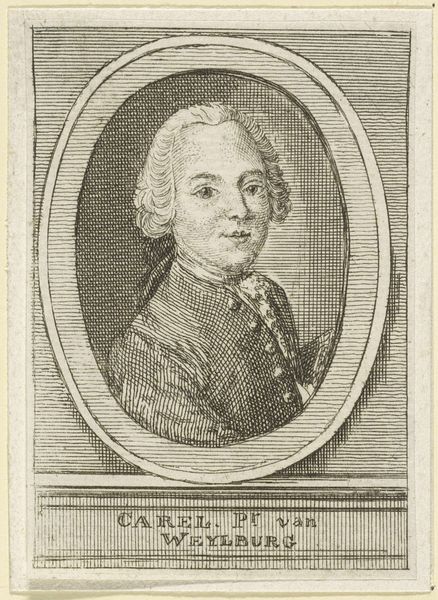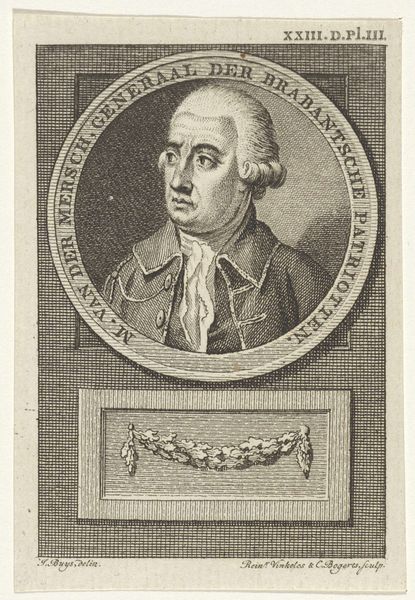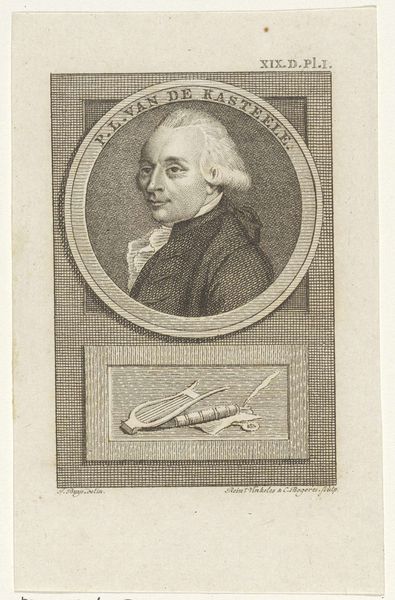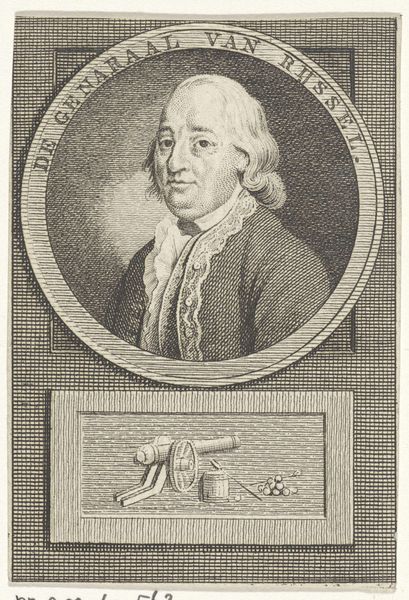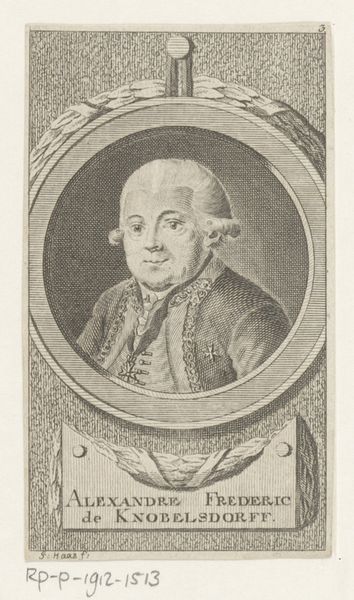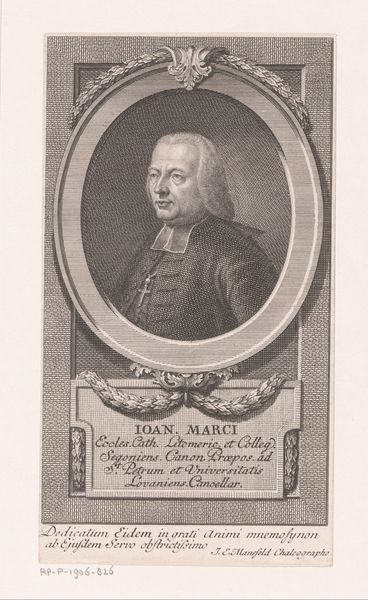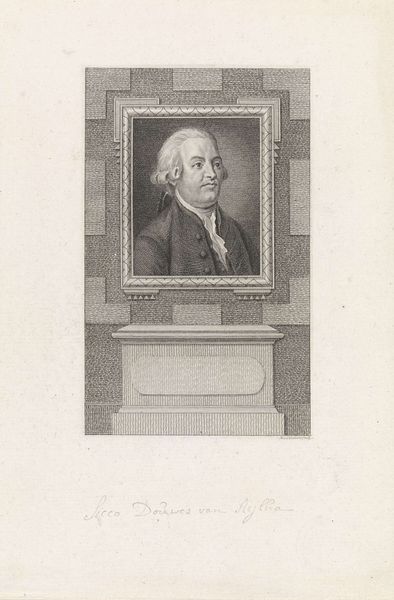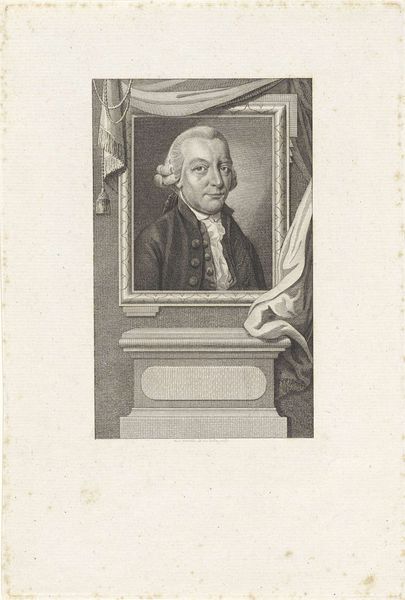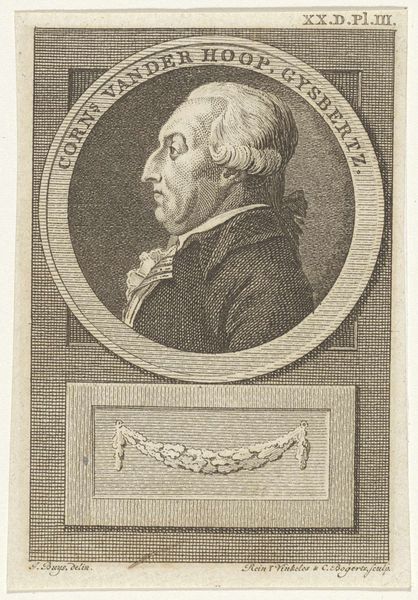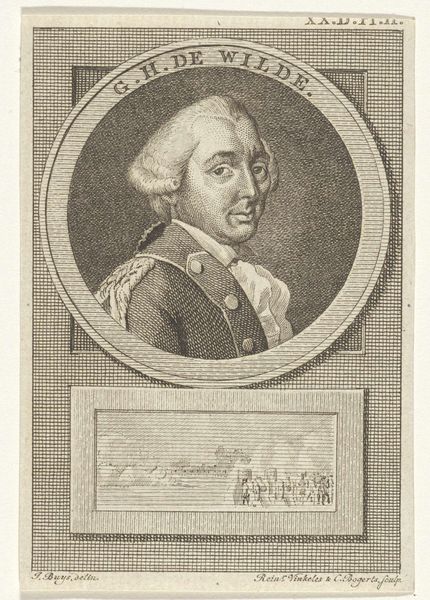
engraving
#
portrait
#
neoclacissism
#
old engraving style
#
history-painting
#
engraving
Dimensions: height 92 mm, width 62 mm
Copyright: Rijks Museum: Open Domain
Editor: This is "Portret van de majoor Theodorus Cornelis van Herzeele," made sometime between 1783 and 1795 by Reinier Vinkeles. It's an engraving, and the subject looks rather severe in his military attire. What can you tell me about its historical significance? Curator: Well, engravings like these served a crucial public function. Consider this: before photography, how did people circulate and consume images of important figures? Prints such as this portrait acted as a form of visual propaganda, disseminating idealized representations of military and political leaders. Editor: Propaganda? I hadn’t considered that. The detail is pretty impressive for a mass-produced image. Curator: Exactly. Notice the Neoclassical style, evident in the clean lines and the use of a portrait medallion. This style lends the image an air of authority and virtue, associating the subject with the ideals of the Roman Republic. What effect do you think that might have had on viewers at the time? Editor: I guess it would make the major seem more connected to the nobler aspects of leadership, projecting an image of stability and respectability, even if that wasn't the complete reality? Curator: Precisely! Also, observe how the laurel wreath at the bottom, a classic symbol of victory and honor, reinforces this narrative. Everything in this image contributes to shaping public perception of Major van Herzeele and, by extension, the military he represents. Editor: It's interesting how much thought and cultural meaning is embedded in something that I initially saw just as a formal portrait. Thanks, I never thought about prints as propaganda! Curator: Indeed. And it's a reminder that images are never neutral; they always operate within a complex web of social, cultural, and political forces. It gives a real insight into the power of visual communication at the time.
Comments
No comments
Be the first to comment and join the conversation on the ultimate creative platform.
